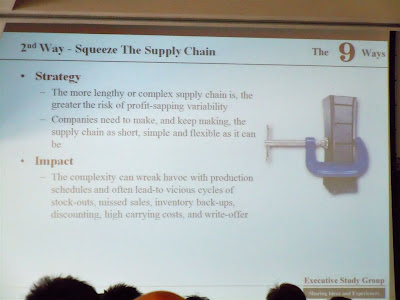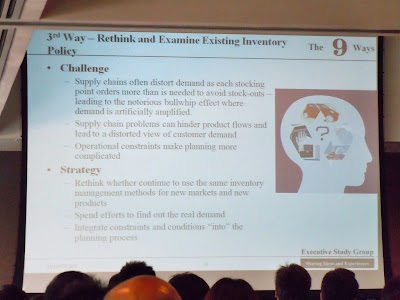Mr. Edward Chen (Manager, Technical Support & Marketing Group, AST Instruments Corporation) was a speaker, who introduced the Raman Spectroscopy and its application.

In the beginning, he briefed the history of Raman which was discovered by Dr. C.V. Raman form India in 1928.

In the beginning, he briefed the history of Raman which was discovered by Dr. C.V. Raman form India in 1928.

The principle of Raman was introduced.
Raman spectra are obtained by irradiating a sample with a powerful source of visible monochromatic radiation (e.g. Argon Laser – 488nm (20492cm-1). The scattered radiation, which was observed at 90 degree to the incident beam, is of three types. They are Stokes, Anti-Stokes and Rayleigh.

The advantage and characteristic of Raman included:
i) Fingerprint for qualitative identification
ii) No sample preparation
iii) Fast and non destructive, and
iv) Highly selective technique.
The following photo showed the instrumentation of Raman Spectroscopy System.

The common lasers used in Raman are Ar, He-Ne and He-Cd.
The following range usually employed:
UV Range: 244, 257, 266, 325, 355, 364nm
VIS Range: 488, 514, 532, 633nm
NIR Range: 785, 830nm
The advantage and disadvantage of working at different wavelengths were shown below.

Raman is a very powerful technique to characterize organic or inorganic compounds. There are many fields of application included Semiconductors, Polymers, Geology/Mineralogy/Gemology, Carbon Compounds, Life Science, Forensics, Pharmaceuticals, Chemistry, Environmental, Physics, Art & Culture, Thin Films, etc.
Then Mr. Edward Chen focused on Photovoltaic applications. There are three main types of photovoltaic (PV) materials included:
· Silicon – the most popular
· Compounds with Cu, In, Ga, S, Se, Cd
· Organic

For silicon based photovoltaic, the following characteristics were stated.
· Crystalline silicon (c-Si) is the most efficient, but very expensive to produce due to the high energy consumption for purification and crystallization.
· Amorphous Silicon (a-Si) is less expensive but less efficient.
· Polycrystalline Silicon (p-Si): Solutions are investigating.
The Raman spectra of these three silicon phases were showed.
The measurement of the ratio between c-Si and a-Si is the main application of Raman spectroscopy.
The following photo demonstrated the stress analysis on silicon material.

Different wavelength had different depth penetration in crystalline silicon.

Mr. Chen introduced different compounds based solar materials such as CIGS (CuInGaSe), CuInSe, CdS, etc.
Finally, Mr. Chen concluded:
i) A variety of silicon samples have been analysed exhibiting different extremes of amorphous and crystalline structure.
ii) Mapping method was used to gain high quality Raman data much faster then point analysis methods. This is due to the reduced laser power density, but increase in the amount of sample being analyzed.














































